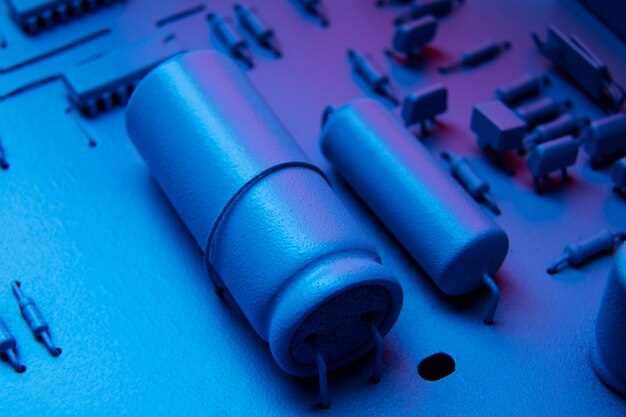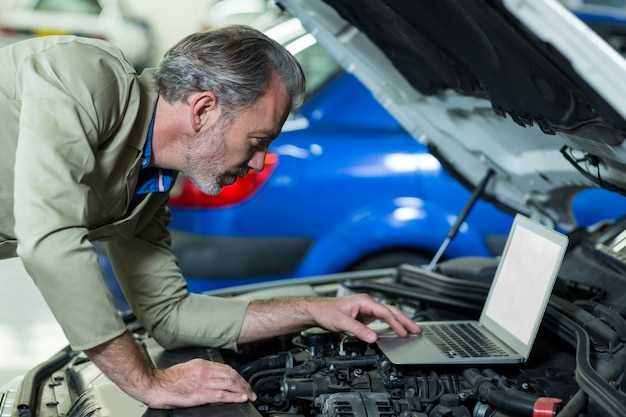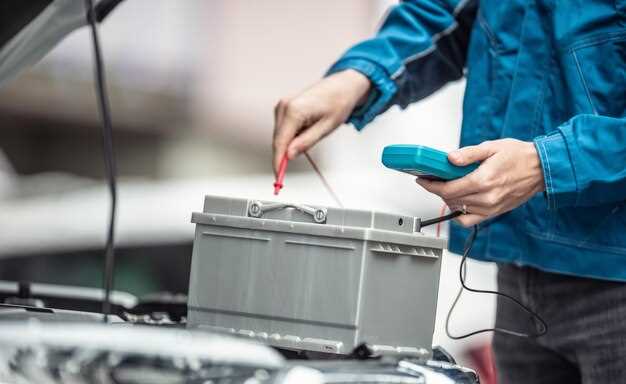
Upgrading the battery and terminals of your Volkswagen Corrado is a crucial step in maintaining its overall electrical performance. A high-quality battery not only ensures reliable starts but also supports the vehicle’s electrical system, allowing various components to function optimally. As automotive technology evolves, the need for upgrades becomes increasingly important to keep pace with modern demands.
When considering a battery upgrade, it’s essential to evaluate your driving habits and the specific electrical load your Corrado requires. Different batteries offer various advantages, such as higher cranking amps and improved durability. Upgrading to a more powerful battery can enhance performance, particularly if you have added aftermarket accessories that drain power.
Equally important is upgrading the battery terminals. Over time, factory-installed terminals can become corroded or loose, leading to poor electrical connectivity. Upgrading to high-quality terminals not only provides a better connection but can also prevent future issues related to corrosion. Together, a new battery and upgraded terminals can significantly enhance your Corrado’s electrical reliability.
Selecting the Right Battery Type for Your Corrado
When upgrading the battery for your Corrado, it is crucial to choose the right type to ensure optimal performance and reliability of the vehicle’s electrical system. Considerations such as the physical size, terminal configuration, and power output of the battery are essential in making an informed decision.
The most common battery types for Corrado models include Lead-Acid, AGM (Absorbent Glass Mat), and Lithium-Ion. Lead-Acid batteries are often the least expensive but may not provide the longevity or electrical performance needed for high-demand applications. AGM batteries, on the other hand, offer superior vibration resistance and a longer lifespan, making them suitable for enthusiasts looking for reliability during rigorous driving conditions.
If your Corrado is frequently used in extreme weather or high-performance scenarios, investing in an AGM battery might be worthwhile as it can handle discharges better without compromising its lifespan. Lithium-Ion batteries are lighter and more efficient but tend to come at a higher price point, appealing primarily to those seeking significant upgrades in weight reduction and performance.
Ensure that the capacity–measured in amp-hours (Ah)–is aligned with your electrical demands. A battery with a higher Ah rating will provide longer usage between charges, crucial for vehicles with added electronic components. Ultimately, when upgrading, it is essential to prioritize not just the cost but the reliability and performance you expect from your battery choice.
Installing Battery Terminals: Tools and Techniques
Upgrading your Corrado’s battery includes not just selecting the right power source but also installing the appropriate battery terminals. Proper installation is crucial for maintaining optimal electrical performance and ensuring the longevity of your battery. Below is a guide on the necessary tools and techniques for effectively installing battery terminals.
Essential Tools

- Wrenches or Socket Set: Use a 10mm socket or wrench to remove and tighten the terminal bolts.
- Wire Brush or Terminal Cleaner: This ensures that the battery posts and terminals are free of corrosion and debris.
- Safety Glasses and Gloves: Protect yourself from potential acid splashes or electric shock.
- Cable Cutters or Strippers: Useful for trimming the battery cable to the desired length and exposing the copper strands for better contact.
- Torque Wrench: To ensure terminal bolts are tightened to the manufacturer’s specifications, avoiding over-tightening.
- Heat Shrink Tubing or Electrical Tape: To insulate connections and protect against corrosion.
Step-by-Step Installation Technique

- Disconnect the Old Battery: Start by turning off the vehicle and removing the negative terminal first, followed by the positive terminal to prevent electrical shorts.
- Clean the Battery Posts: Use a wire brush to remove corrosion or dirt from the battery posts, ensuring a clean surface for the new terminals.
- Prepare the Cables: If replacing the cables, use cable cutters or strippers to prepare the wires. Leave enough length for a secure connection.
- Attach New Terminals: Place the terminal on the battery post and secure it with the bolt. For a secure fit, use a torque wrench if necessary.
- Insulate Connections: Apply heat shrink tubing or wrap electrical tape around the terminal connections to prevent moisture ingress and corrosion.
- Reconnect the Battery: Attach the positive terminal first, followed by the negative terminal, ensuring a secure connection.
By following these tools and techniques when installing battery terminals, you can enhance the electrical performance of your Corrado after an upgrade. Maintaining a clean and secure connection helps maximize battery efficiency and lifespan.
Safety Precautions for Battery Replacement Procedures
When upgrading your Corrado battery, it is essential to follow specific safety precautions to ensure a safe and efficient process. Always wear protective gear, including safety goggles and gloves, to shield yourself from potential acid spills and electrical hazards. Working with batteries involves handling corrosive materials, and personal protection can minimize risks.
Before beginning the replacement, disconnect the negative terminal first, as this reduces the chance of a short circuit. Ensure that you are working in a well-ventilated area to avoid the accumulation of hydrogen gas, which can be released during battery charging or discharging.
Inspect the new battery and terminals for any visible damage before installation. Damaged components can lead to electrical failures or accidents. Avoid touching metal tools to both battery terminals simultaneously, as this can create a short circuit, resulting in sparks or damage.
Keep a fire extinguisher nearby when working with batteries, as the gases produced can be flammable. After the battery is installed, always check for any signs of leaks or corrosion around the terminals. Applying a protective grease to the terminals can help prevent corrosion and ensure a solid electrical connection.
Finally, dispose of your old battery properly by taking it to a recycling center or an automotive store that accepts used batteries. Do not throw the battery in the trash, as it contains harmful substances that can damage the environment.
Checking Electrical Connections for Optimal Performance
Ensuring optimal performance of your Corrado’s battery requires meticulous attention to the electrical connections. The reliability of your vehicle’s electrical system heavily depends on how well these connections are maintained. Corrosion, dirt, and loose fittings can severely hinder the efficiency of power transfer, leading to poor battery performance and starting issues.
Begin your inspection by examining the battery terminals. Look for any signs of corrosion, which typically appears as a white, fuzzy substance. If you notice any buildup, clean it using a mixture of baking soda and water, followed by a thorough rinsing. After cleaning, apply a protective coating to prevent future corrosion.
Next, check the battery cables for fraying or damage. Any visible wear can compromise the electrical connection and reduce reliability. Tighten any loose connections, ensuring that the clamps are secure against the battery posts without being overly tightened, which can cause damage.
In addition to the battery terminals, inspect the junction points where cables connect to the starter and the alternator. These connections should also be free of corrosion and securely fastened. Ensuring that all electrical contacts are in peak condition is vital for maximizing the performance of the battery and the entire electrical system.
Lastly, consider using dielectric grease on your terminals and connections. This will provide an additional layer of protection against moisture and corrosion, further enhancing the reliability of your electrical system. Regular inspections and maintenance of these components are essential to ensure your Corrado’s battery operates optimally.
Upgrading Battery Leads: Materials and Benefits
When considering an upgrade for your Corrado’s battery system, focusing on battery leads is essential. The materials used in battery leads greatly influence the reliability and performance of your vehicle’s electrical system. Common materials include copper, aluminum, and specialized alloys, each offering various benefits.
Copper is the most favored material for battery leads due to its excellent conductivity. It allows for minimal resistance, ensuring that electrical energy flows efficiently from the battery to the starter and other components. This upgrade can result in quicker starts and improved overall electrical performance.
Aluminum, while less conductive than copper, is lighter and often more affordable. However, its use requires careful consideration of the connections to prevent corrosion and ensure long-term reliability. If choosing aluminum, look for high-quality connectors and insulators to maintain electrical integrity.
Another option is tin-coated copper, which combines the benefits of copper’s conductivity while providing resistance to corrosion. This is particularly important in environments where moisture can lead to degradation over time. Using tin-coated leads can enhance the durability and reliability of your battery connections.
Upgrading the terminal connectors is equally important. Choosing connectors made from high-quality materials ensures a secure fit and longevity. A solid connection minimizes resistance, which translates to more electrical power reaching your vehicle’s systems, enhancing performance and reliability.
Overall, investing in high-quality battery leads made from superior materials not only improves the electrical efficiency of your Corrado but also ensures that your vehicle remains dependable. The right upgrade can significantly enhance your driving experience, highlighting the importance of proper maintenance and component selection in automotive performance.
Troubleshooting Common Battery and Terminal Issues
Maintaining the electrical system of your Corrado is crucial for its reliability and performance. Common battery and terminal issues can lead to problems such as poor starting, dim lights, or electrical malfunctions. Here are some common issues you might encounter, along with effective troubleshooting steps.
| Issue | Symptoms | Troubleshooting Steps |
|---|---|---|
| Corroded Terminals | Difficulty starting, intermittent electrical issues | Inspect battery terminals for corrosion. Clean terminals with a mixture of baking soda and water, rinse, and dry. Ensure connections are tight. |
| Weak Battery | Cranking slowly, no-start condition | Check battery voltage with a multimeter. A reading below 12.4V indicates a weak battery. Consider recharging or replacing it. |
| Loose Connections | Fluctuating electrical performance, dim lights | Check for loose or damaged cables at both the battery and starter. Tighten connections securely and inspect for any wear or fraying. |
| Fused Battery | Multiple electrical failures, unable to start | Inspect battery for bulging or leaking signs. If the battery is damaged, replace it immediately to avoid further electrical issues. |
| Alternator Problems | Warning lights on dashboard, poor battery charging | Test the alternator output while the engine is running. A reading below 13.8V indicates potential alternator failure. Consider professional inspection. |
By addressing these common battery and terminal issues promptly, you can enhance the reliability of your electrical systems and ensure optimal battery performance in your Corrado.











